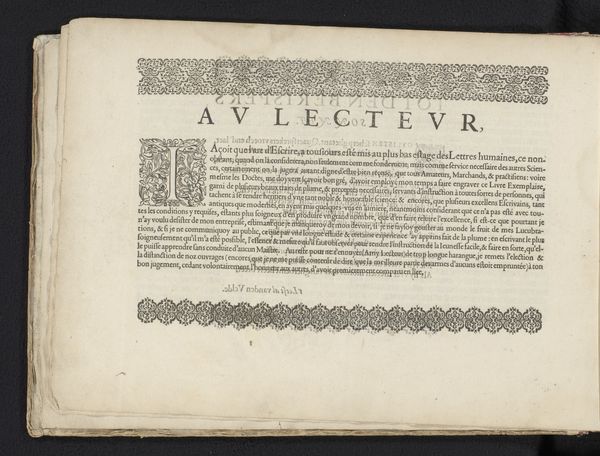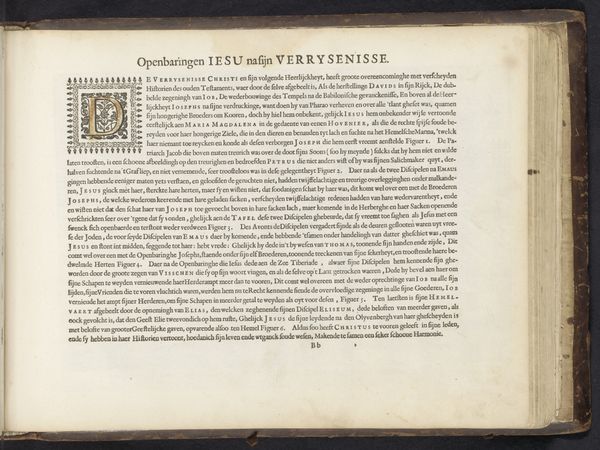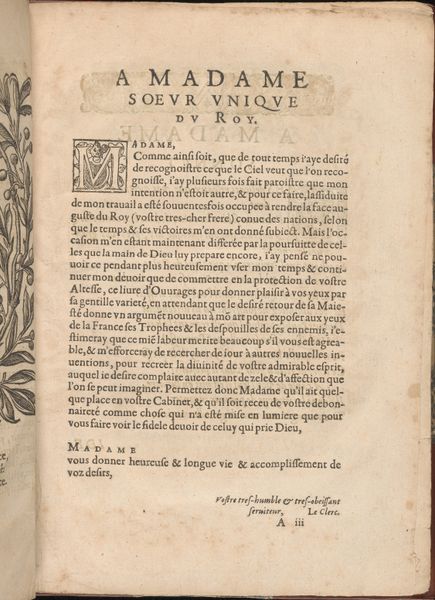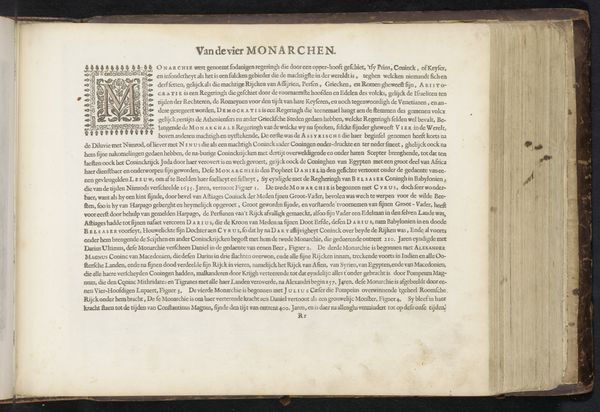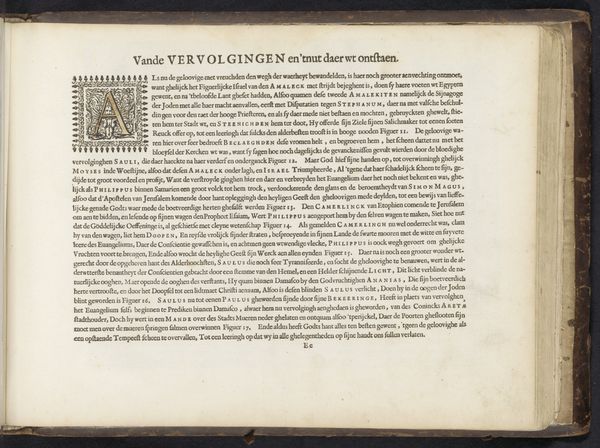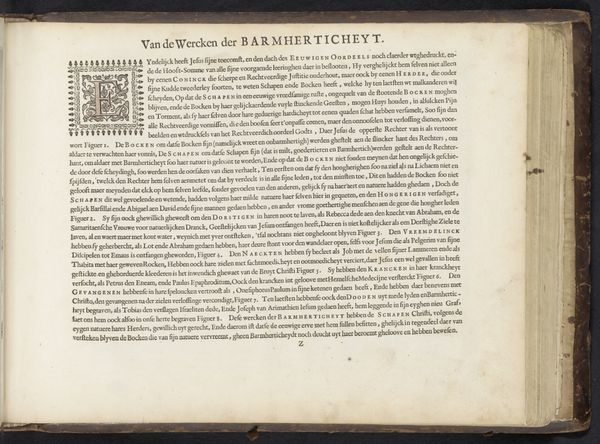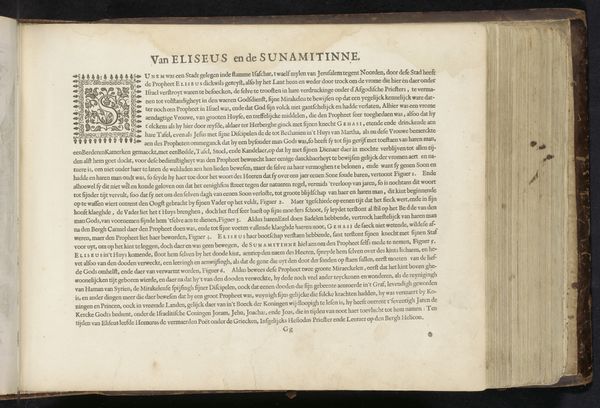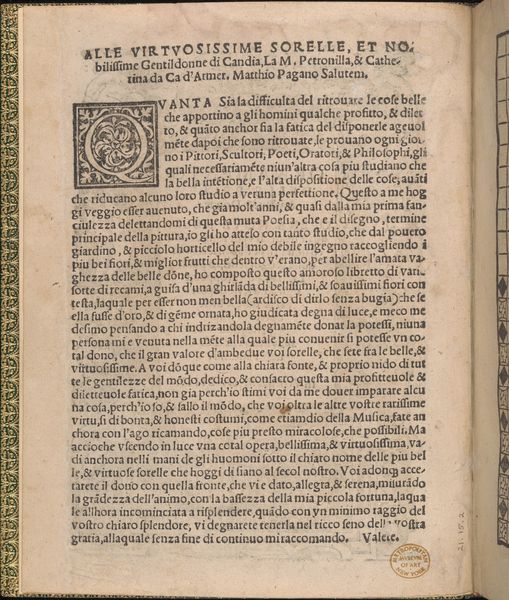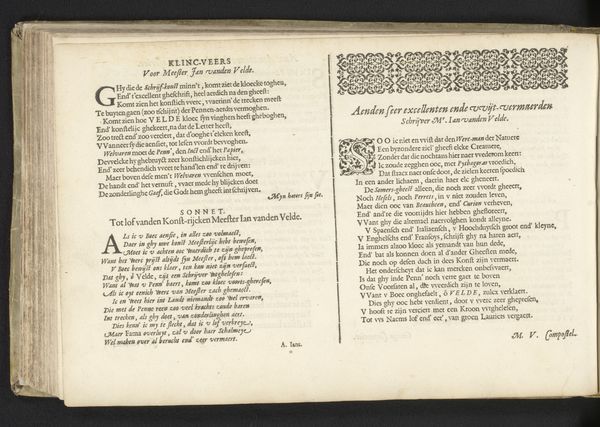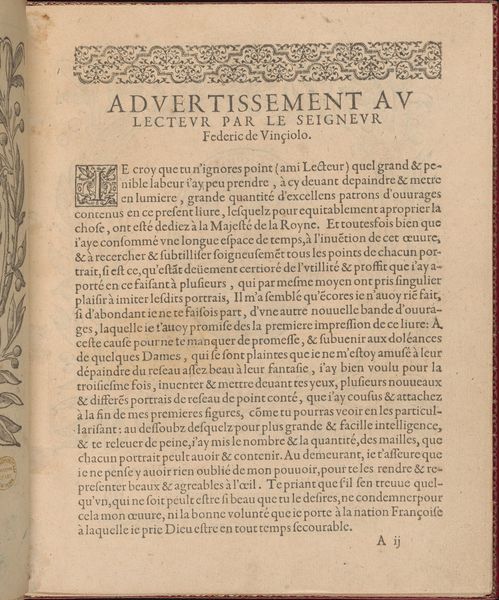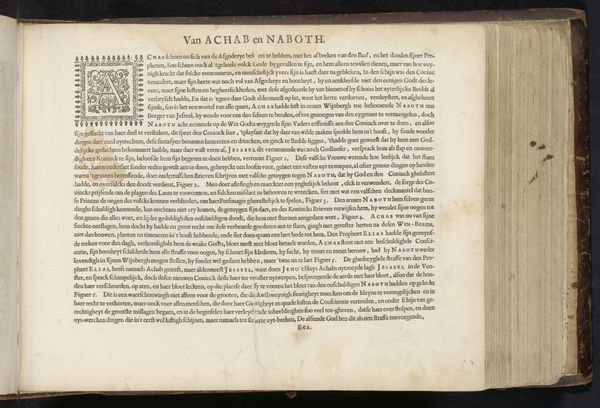
Dedicatie aan de baljuw, burgemeesters, schepenen en raad van de stad Vlissingen, pagina 1 van 2 Possibly 1616 - 1617
0:00
0:00
print, paper, typography, engraving
# print
#
paper
#
text
#
11_renaissance
#
typography
#
engraving
Dimensions: height 225 mm, width 335 mm
Copyright: Rijks Museum: Open Domain
Editor: This is a fascinating dedication page from what looks like a book, titled "Dedicatie aan de baljuw, burgemeesters, schepenen en raad van de stad Vlissingen" by David Roelands, likely from around 1616 or 1617. The text is beautifully engraved, giving the whole page a sense of formality and importance. What do you see as significant in a historical context, looking at a piece like this? Curator: Well, what immediately strikes me is the emphasis on civic virtue and the explicit link between divine blessing and human accomplishment. The dedication is to the magistrates of Vlissingen, praising their “magnificence, virtue, and discretion.” This public pronouncement in printed form reinforces their authority, aligning them with God's will and the well-being of society. What strikes you about that initial “M,” for example? Editor: I see it is pretty ornate! Like an initial you would see in a medieval manuscript! I am noticing the use of print and typography to emphasize text. It appears to enhance readability and provide decorative elements, what can we say about that? Curator: Precisely! The art of typography itself gains prominence here, elevated as a tool for expressing thought and reaching a wider audience – even bridging distance and time. The text also acknowledges that Europe admired the Indigenous People. Considering Europe's colonial activities at that time, do you read the subtext? Editor: Hmm... that even though colonizers from Europe enslaved people, and did horrible things, at least here Roelands is being honest? Or is he commenting on what he is witnessing? It appears as an attempt at creating harmony... a subtle effort at balance, perhaps. Curator: It's complex, isn't it? There's a celebration of European ingenuity while acknowledging an encounter with another culture. It encapsulates the ambition and also, perhaps unintentionally, the implicit power dynamics of the era. These kinds of civic displays often serve multiple purposes beyond the immediately obvious. Editor: I guess analyzing this page, we begin to consider how art intersects with cultural values, political structures, and even the earliest forms of mass communication in shaping society. It makes you consider a historical legacy still visible today! Curator: Precisely. We come face to face with history. That, in turn, invites us to assess where we are headed.
Comments
No comments
Be the first to comment and join the conversation on the ultimate creative platform.
